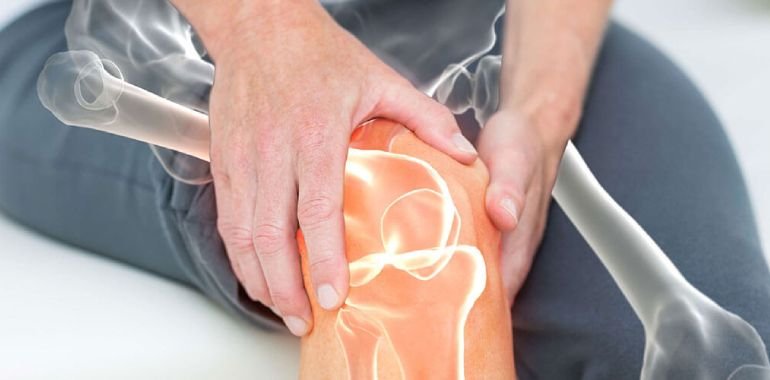
How can physiotherapy help with knee pain?
Knee pain is a quite common ailment that affects people of all ages. It can be caused by a number of factors, including injury, arthritis, overuse, and degenerative conditions. Knee pain can be debilitating, limiting mobility and making daily activities difficult. Physiotherapy can be an effective treatment option for knee pain, focusing on pain reduction, mobility improvement, and injury prevention.
Stretching, twisting, and any activity that exceeds the knee's endurance are common causes of minor knee injuries. Knee injuries can also be caused by sudden movements or jerks, which are common while walking on uneven terrain or training on rough surfaces. The following injuries and diseases can cause chronic knee pain:
- Muscle sprains
- Patellofemoral syndrome (bursitis, tendinitis, and patellofemoral syndrome)
- Idiopathic iliotibial band syndrome
- Baker's cyst
- Osteochondritis
Reduces pain
Endorphins are naturally produced by the body in response to pain or stress. Physiotherapy reduces metabolic disturbances by relaxing the muscles and tendons surrounding the knee. It also relieves pressure on the knee and provides pain relief.
Improves flexibility
Regular physiotherapy not only relieves pain but also improves knee mobility and leg flexibility.
Reduces joint stiffness
Knee muscles stiffen as a result of overuse or participation in strenuous physical activity. In most cases, this will result in an injury, such as a sprain/strain or a ligament injury. By relaxing the muscles and allowing the knee joints to rest, physiotherapy can help relieve knee stiffness.
Strengthens and rebuilds muscle
Physiotherapy will aid in the rebuilding of the muscles surrounding the joint. Because they support the tendons, ligaments, and kneecap, the knee muscles must be strong. Weak muscles provide less support, which can lead to further knee or foot injury. Gentle knee exercises are performed by physiotherapists to help the muscles soften and relax, allowing them to rebuild the damaged tissue. This will not only strengthen the knee but will also help to heal the initial injury.
Gait and balance training
Knee pain can throw off your gait and balance, leading to further injury and pain. Physiotherapists can assist in the improvement of gait and balance by providing exercises and developing plans that focus on coordination and balance.
Physiotherapy is extremely beneficial for knee injuries in general. Muscle, tendon, and tissue manipulation allows the knee to release pressure as the muscles soften and relax. Physiotherapy can aid in the recovery from sudden, acute injuries such as ligament damage or sprains. Overuse injuries may also benefit from a course of physiotherapy sessions to allow the knee to rest, recover, and rebuild the strength of damaged muscles and ligaments.
Physiotherapy Treatment
- Cryotherapy: Cryotherapy, also known as Cold therapy, is the use of low temperatures for local or general medical treatment. Cryotherapy is used to treat a wide range of tissue damage known medically as lesions.
- Hydrotherapy: also known as hydropathy, is a type of water cure. It entails the use of water to relieve and treat pain. The therapeutic goal is to increase blood circulation and alleviate disease symptoms.
- Manual therapy: It is a type of physical therapy. Musculoskeletal pain and disability are treated by a physical therapist, physiotherapist, occupational therapist, chiropractor, or osteopathic physician. It primarily consists of kneading and adjusting muscle and joint mobility.
- Electro therapy: Electrotherapy is used in physical therapy to relax muscle spasms and to prevent and slow down disuse atrophy. Increased local blood circulation, muscle rehabilitation, and electrical muscle stimulation education, all while maintaining and increasing range of motion. It is also beneficial in the treatment of acute post-traumatic pain and post-surgical acute pain. Immediate post-surgical muscle stimulation for venous thrombosis prevention, wound healing, and drug delivery.
- Exercise therapy: A regimen or plan of physical activities designed and prescribed for specific therapeutic goals is known as exercise therapy. Its goal is to reestablish normal musculoskeletal function. Through neuro-education, gait training, and therapeutic activities, this treatment helps to reduce pain caused by injury or disease. Quadriceps, VMO, muscle strengthening, resistance Ex, Assistive exercises, and other physical activities are available.
Finally, physiotherapy can help with knee pain in a number of ways. Physiotherapists assess, diagnose, and develop customized treatment plans, which may include pain management techniques, strengthening and stretching exercises to improve mobility, and education on healthy lifestyle choices. Physiotherapy is a great option for people who want to get rid of knee pain without resorting to medication or surgery.

